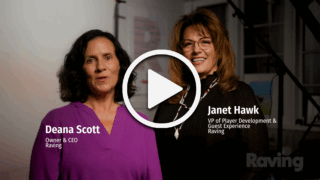
How to address fear, tension, resistance and fatigue
Ready or not, here we go! We are coming out of our burrows and blinking in the light of this new world. Reopening is happening and we are entering our new normal. Businesses are taking great pains to make their spaces safe, but we need to think about how to make our guests feel safe.
What we focus on expands. The way we message the safety that is being provided will either make the guest feel more comfortable or remind them to remain anxious. Anxious and fearful don’t make us safe and it certainly does not make for an enjoyable experience.
It isn’t magical thinking, but it is utilizing the mind’s ability to filter and look for what to focus on. That is how we expand by using our attention. By narrowing your focus, your mind naturally seeks to find it. If your focus is on the fear, one’s mind is thinking through all the ways a problem could happen and is distracted from basic safety practices.
Are you creating or easing tension?
As guests come through the door it is important to train team members to focus on cultivating the feelings of high level of service and to keep the focus on the comfort of a safe environment. Remind customer-facing team members that the framing of their interactions is going to create either ease or tension. There is a big difference in noting all that has been done for the guest’s safety instead of compounding fears by referencing hazard measures. It is all in the framing and tone.
Spacious environments, visually notable cleaning crews and sanitizing stations feel safe when paired with warm words of welcome and a high level of service. They can be fear-inducing when placed in the frame of protocols and alerts. Training your team on how to focus and speak to safety and not fear is more important than ever. Words like “secure,” “well,” and “effective,“ feel reassuring but really it is about the tone of delivery. Encouraging staff to think of using a soothing, empathic voice is the most powerful of all. Ultimately, as people, we are in an instinctually reactive state and the tone of the delivery is what guests will respond to. Even frustrated players that don’t like the new methods, will relax when they hear a voice that is concerned about their feelings. This is very different from placating, it has to come with true sincerity.
Coping with resistance and fatigue
Resistance is also an energy that expands. To push away or deny the reality of today’s world or a guest’s pointed questions also increases fears. All of us have grown weary of this time and its restrictions. That includes team members that may be happy to be back at work right now. Over time, the fatigue of the new normal can create wear and their ability to maintain the positive outlook that is vital in delivering top guest service.
This is the time that we acknowledge and redirect the focus. That means using the phrase “Yes, and …” often. “Yes, masks are uncomfortable, and we are providing the softest most reliable ones available.” When said with genuine empathy, it helps to refocus on safety, not a frustrated fear.
Sometimes the best way to reduce resistance is to allow space for venting. When allowed to express frustration, it drains the energy from the emotion and allows us to endure longer. Team members need space to release frustration away from guests and a patient manager that truly empathizes – even while noting the need to sustain – is going to have team members that endure much longer.
To pretend that we will all be in a state of perpetual positivity is resistance that will grow into low morale. Continuing to note what is actually working well while acknowledging the frustration of the times ensures sustainability. Ultimately, your focus will become your customer’s experience.







